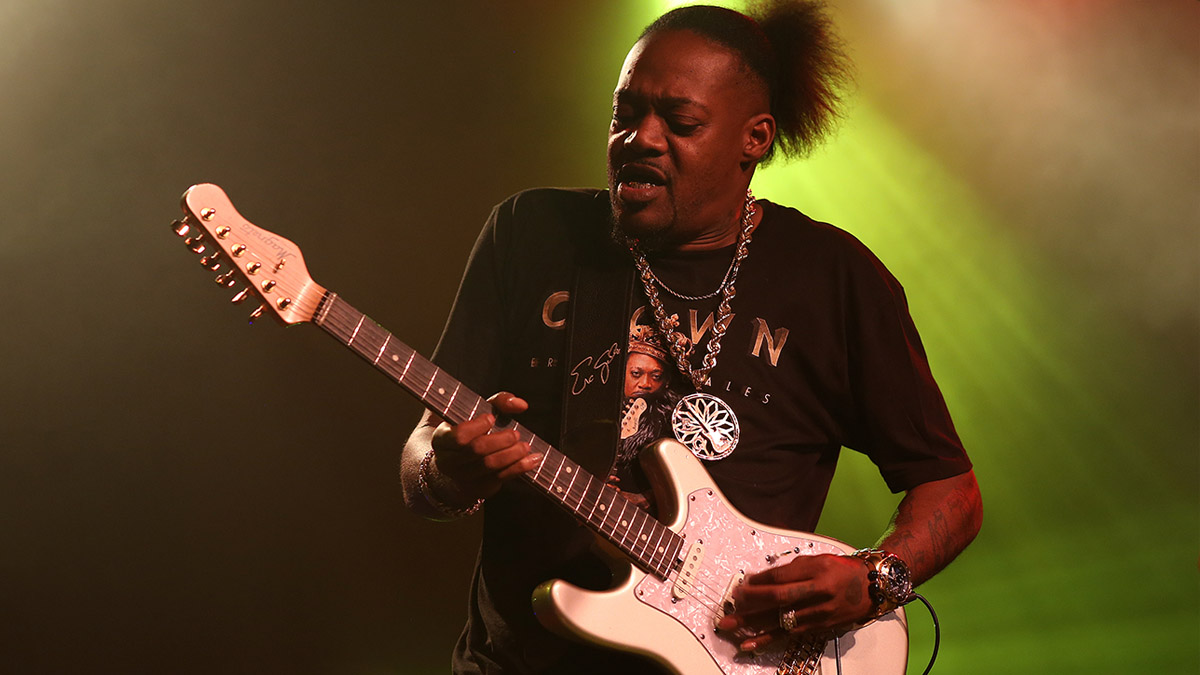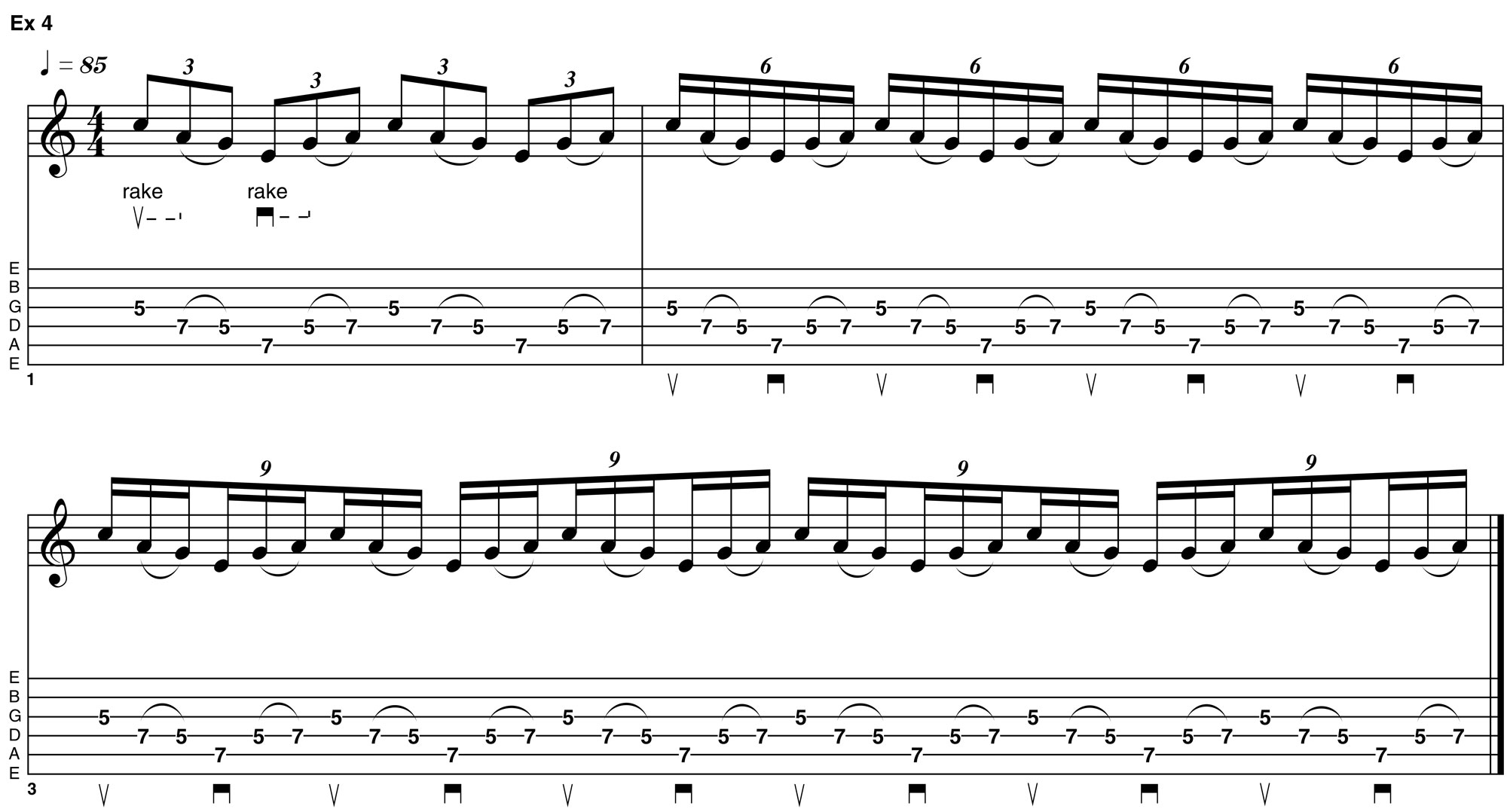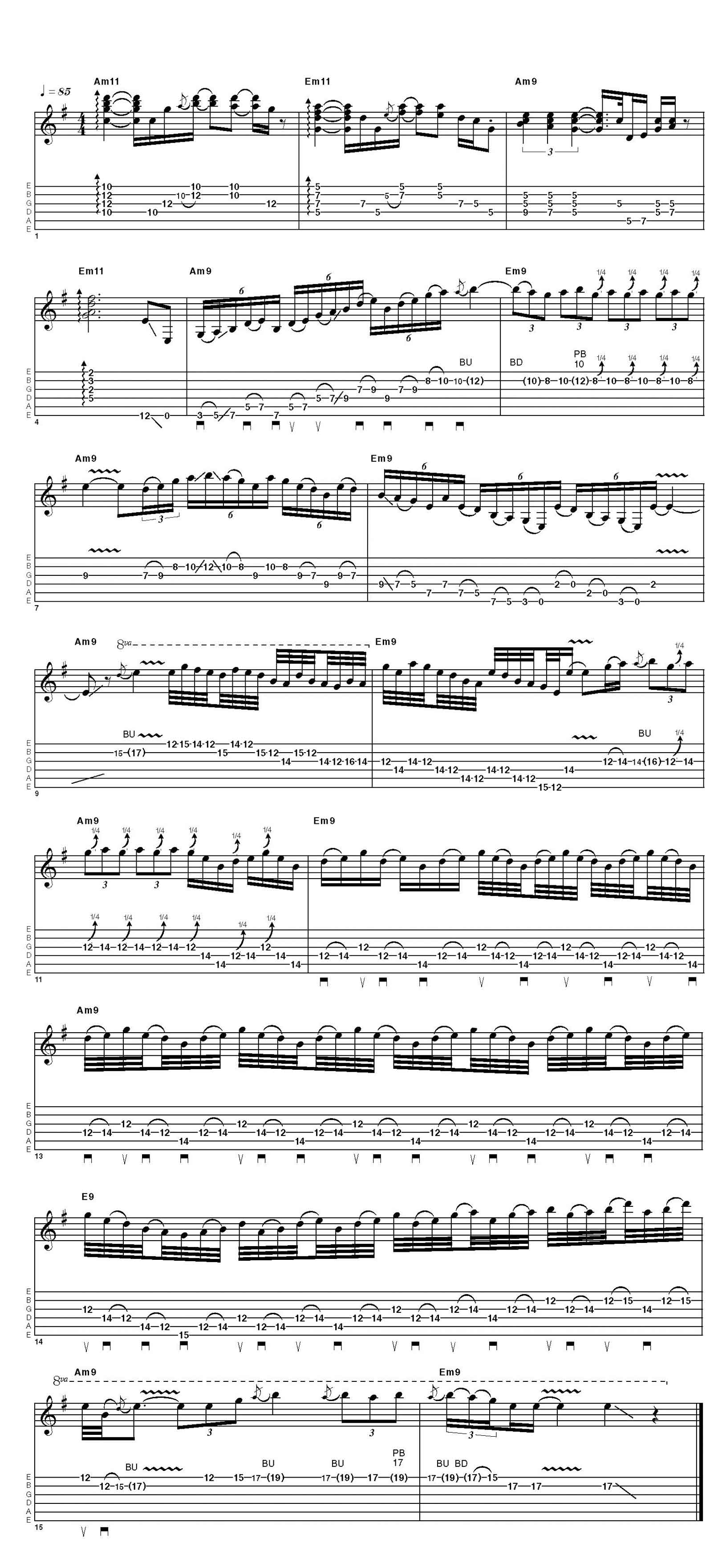How Eric Gales’ signature licks can hot-wire your blues playing
Gales’ genre-mashing guitar style is rooted in the blues but takes exhilarating detours through his expansive musical vocabulary. This primer establishes the mood with some jazz chord melodies before tackling his lightning quick picking

The objective of this article is to give you an insight into the style, sound and techniques of the great Eric Gales.
To do this we’ll be looking at extended chords, flowing pentatonic lines and some very specific picking techniques. But before we get into those details, perhaps we should deal with what many would agree separates Eric from the vast majority of his contemporaries.
Eric plays a right-handed electric guitar flipped over, but, as he explained in his recent interview, he is actually right- handed, learning ‘upside down and backwards’ like this because it felt comfortable. Having the strings reversed like this gives a different perspective on chords and lead lines.
We’ll be paying particular attention to how it can also give an unusual twist to his fast and fluid economy picked lines – and have a shot at emulating this without having to buy a left-handed guitar and flip it over!
Eric builds his tone on the foundation of a clean guitar amp with a selection of carefully chosen overdrive and fuzz pedals, enabling him to cover the wide-ranging tonal bases he relies on for chords, crunchy rhythm parts and solos.
Of course, it’s not possible to cover every single aspect of a style as wide ranging as Eric’s in this space; his chordal approach could likely take up a whole article, then there is his use of Phrygian mode for unexpected exotic melodic lines...
Hopefully, these examples will give you a good overview of the way Eric approaches many key areas, which can be expanded upon at leisure. There is also a 16-bar solo, in which I aim to put some of these into a more ‘real world’ context.
Example 1

Taking the first of the two chords in our example track, A minor, we have both the minor 11th (a particular favourite of Eric’s) and the minor 9th, which is similar but less ‘open’-sounding.
These are arranged so that the top notes give a variety of melodic options, if you fancy some Wes Montgomery or Eric Johnson-style chord melodies – both of whom have been a big influence on Mr Gales.
Example 2

The other chord in the demo track is E minor. I have given this the same treatment as the Am9/11 chords in Example 1. Though these are played in a sequence, it doesn’t have to be that way.
A well-chosen extended chord goes a long way, especially mixed into a melodic line or two. This goes some way to explaining how Eric manages to fill so much musical space with one guitar!
Example 3

This ascending pentatonic line is broken up into two halves to walk you through what happens with Eric’s picking hand as he crosses the strings.
Though alternate picking certainly plays a part in his style, many of Eric’s distinctive pentatonic lines are generated by raking across two strings with a single up- or downstroke.
In this example, notice how this forms a pattern of three downstrokes followed by a single upstroke.
Example 4

Taking things up a gear, this example uses a similar picking approach, raking across the strings rather than adopting a strict alternate approach. This allows you to cross the strings far more quickly, though it can feel counterintuitive at first – a bit like sweep picking.
We move through various triplet based groupings, finishing up with nine on each crotchet beat! This is advanced stuff, so don’t feel that you should be able to master it quickly.
Example 5

This solo takes a few of Eric’s favourite ideas and combines them with the hope of emulating his style. Some clean extended chords are followed by a switch to a fuzz-type tone, mixing pentatonics with bluesy melodic lines and some fast runs using both alternate and economy picking.
I’ve included detailed instructions of where to use up- and downstrokes, but it’s an interesting exercise to try reversing these sometimes. Remember, Eric sees the strings – and his picking patterns – the other way up!
Get The Pick Newsletter
All the latest guitar news, interviews, lessons, reviews, deals and more, direct to your inbox!
As well as a longtime contributor to Guitarist and Guitar Techniques, Richard is Tony Hadley’s longstanding guitarist, and has worked with everyone from Roger Daltrey to Ronan Keating.
"Upgrading from your entry-level acoustic opens the door to an entirely new world of tonewoods, body shapes, and brands": 6 signs it's time to upgrade from your first acoustic guitar
"I'm past my prime": 5 common excuses for not learning the guitar – and 5 body and mind-boosting reasons you should










![Joe Bonamassa [left] wears a deep blue suit and polka-dotted shirt and plays his green refin Strat; the late Irish blues legend Rory Gallagher [right] screams and inflicts some punishment on his heavily worn number one Stratocaster.](https://cdn.mos.cms.futurecdn.net/cw28h7UBcTVfTLs7p7eiLe.jpg)
